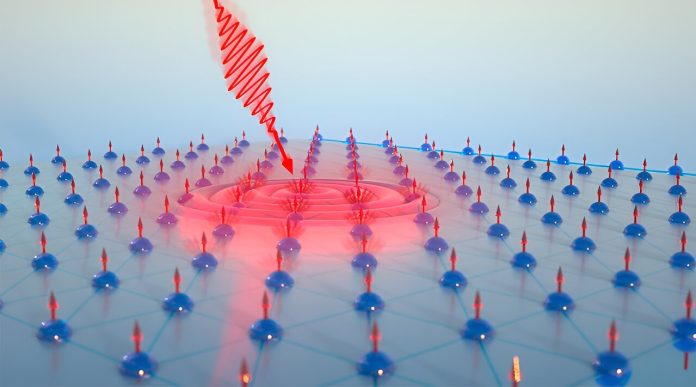
Researchers at the University of Chicago Pritzker School of Molecular Engineering (PME) have made a surprising discovery that could lead to a new type of memory storage, controlled by light and highly energy-efficient.
The material at the center of this discovery is a complex compound made of manganese, bismuth, and tellurium, known as MnBi2Te4.
While studying this material, scientists found that its magnetic properties could be easily and quickly changed with light, opening up the possibility of using lasers to store and retrieve data.
Shuolong Yang, an assistant professor of molecular engineering and the senior author of the study, emphasized the importance of fundamental science in uncovering new engineering possibilities.
“We began our research with the goal of understanding the molecular structure of this material,” Yang said. “But along the way, we discovered a new property that could make it incredibly useful.”
The researchers published their findings in the journal Science Advances. In their paper, they explained how the electrons in MnBi2Te4 exist in two competing states.
One of these states is known for its potential in quantum computing, while the other is highly responsive to light, making it ideal for optical memory storage.
MnBi2Te4 has been previously studied for its potential as a magnetic topological insulator (MTI).
This type of material behaves as an insulator inside but can conduct electricity on its surface.
In theory, it should allow electric currents to flow in a two-dimensional path along its edges, a feature that could be very useful for quantum data storage.
However, researchers have struggled to observe these predicted properties in experiments. Yang’s team set out to understand why the material wasn’t performing as expected.
To do this, they used advanced spectroscopy techniques, including time- and angle-resolved photoemission spectroscopy, which allowed them to see how electrons behaved within the material in real-time.
They also collaborated with another research group at the University of Florida to study the material’s magnetism using a technique called the magneto-optical Kerr effect (MOKE).
The results from these experiments revealed that MnBi2Te4 wasn’t behaving as an ideal topological material because another type of electronic state was competing for the electrons.
This quasi-2D state, while not good for quantum data storage, turned out to be perfect for optical memory.
It has a strong interaction between its magnetic properties and light, which could be harnessed to create more efficient memory devices.
Now, Yang’s team is planning further experiments to explore how lasers can be used to control MnBi2Te4’s properties.
They believe that an optical memory device based on this material could be much more efficient than current electronic memory systems.
Yang also noted that by better understanding and controlling the balance between the two electronic states in MnBi2Te4, it might be possible to improve its performance as a topological insulator for quantum computing, while also exploring its potential for optical memory storage.
This dual-use capability could pave the way for more advanced and versatile technologies in the future.



